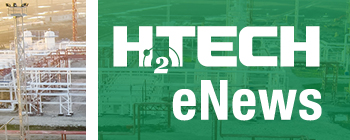News
Industry leaders share blueprint for H2 project success
At the World Hydrogen 2025 Summit in Rotterdam, leaders from across the global hydrogen (H2) value chain gathered for a high-impact panel discussion titled “Navigating Today’s Challenges: Delivering Successful H2 Projects.” Moderated by Ivana Jemelkova, CEO of the Hydrogen Council, the session featured executives from Air Liquide, Bosch, Electric Hydrogen, InterContinental Energy, and CF Industries.
Together, they offered a pragmatic, yet forward-looking perspective on scaling H2 in real-world applications—from ammonia and mobility to giga-scale renewables.
Erwin Penfornis of Air Liquide spotlighted the company’s electrolyzer project in Normandy, which will be Europe’s largest once commissioned, supplying both refineries and zero-emission fleets. “We now have a replicable business case,” Penfornis noted, highlighting similar projects underway in the Netherlands.
Bosch’s Thomas Pauer emphasized the importance of technology openness. “For heavy-duty, off-road, and industrial applications, batteries are not enough. H2 engines and fuel cells will play a vital role.”
Electric Hydrogen CEO Raffi Garabedian—formerly of the solar sector—reminded the audience that steep cost curves are possible. “Renewable H2 doesn’t have to be expensive. Focus on cost,” he said, pointing to lessons from the solar industry’s transformation from fringe to mainstream.
For CF Industries, the challenge is balancing low-carbon ambitions with commodity market realities. “We’re investing to decarbonize ammonia, but demand signals and global carbon standards remain fragmented,” said VP Linda Dempsey.
Isaac Hinton of InterContinental Energy closed with a call for aligned international policy. “We have world-class partners and projects. But applying for support in three different countries with three different timelines is inefficient. The industry needs global coordination.”
“We are doing this. We can do this. We will do this,” said Linda Dempsey, CF Industries.
Despite differences in approach, all panelists agreed: the time for H2 is now. What’s needed is pragmatic regulation, industry resilience, and a willingness to “just do it”—because the stakes for energy transition could not be higher.
Story by: Jim Watkins, European Business Development Director and Podcast Host

